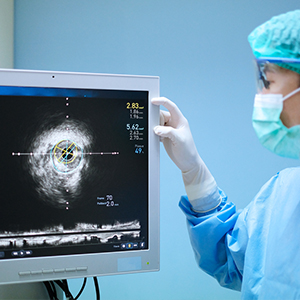FFR, IVUS, OCT Guided Procedures in Bandlaguda
Fractional flow reserve (FFR) is a minimally invasive procedure to trace out how bad the narrowing (stenosis) is in your coronary arteries. Your doctor does this by checking the blood pressure and flow in your coronary arteries. Your doctor compares the highest possible blood flow you'll have with and without a blockage.
Doctors do the fractional flow reserve test as part of a cardiac catheterization of your heart’s left side or during a coronary angiogram. The results aid them in deciding which treatment you need.
IVUS
An intravascular ultrasound is an imaging test that makes images of the heart and blood vessels from the interior of the body. An interventional cardiologist places a catheter with an ultrasound probe into a blood vessel within the groin or wrist.

OCT
OCT Optical coherence tomography (OCT) is a novel invasive imaging method done along with coronary angiography that produces high resolution intracoronary images.
Using infrared light, OCT permits detailed assessment of coronary atherosclerotic plaques and fills up the gaps in conventional invasive coronary angiography.
OCT catheters contain a single optical fiber that emanates infrared light. OCTs measure the echo time delay and the signal intensity after its reflection or back-scattering from the coronary wall structures while operating a pull-back along the coronary artery in parallel and thus performing a scan of the segment of interest
For more details, consult Dr. Naresh Kumar Monigari at Interventional cardiology hospital in Bairagiguda
